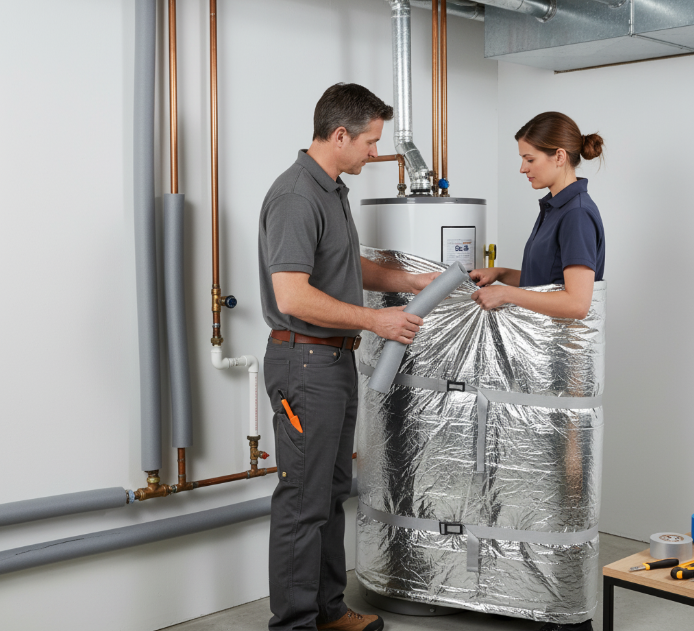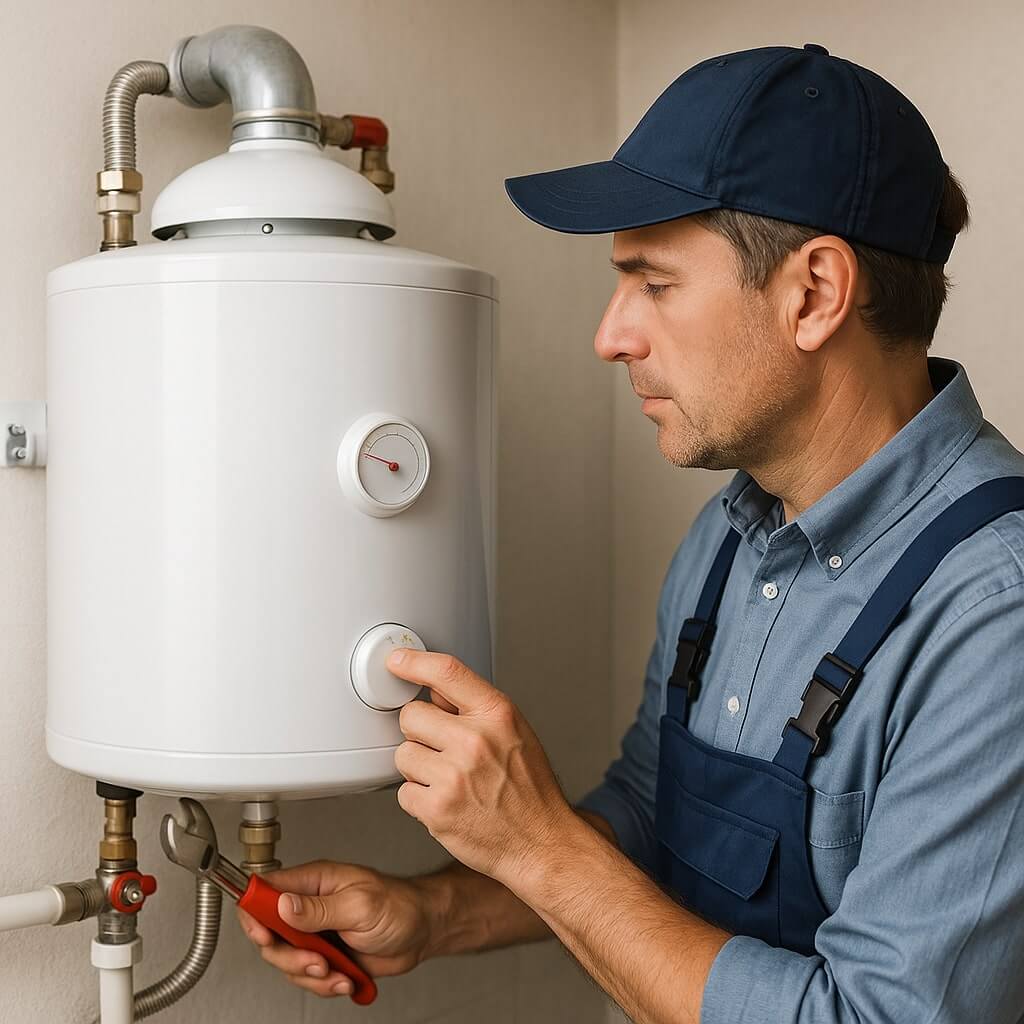Maintaining your home water heater is vital for its efficiency and longevity. Ignoring routine care can lead to costly repairs and reduced performance. By focusing on key aspects like the anode rod, tank flushing, and temperature settings, you can prevent common issues. Insulating your system and scheduling professional check-ups can further enhance its reliability. Let’s explore these essential tips to guarantee your water heater runs smoothly and efficiently.
Key Takeaways
- Inspect the anode rod every 1-3 years and replace if corroded to prevent costly repairs.
- Flush the tank annually to remove sediment and maintain optimal water heater efficiency.
- Set temperature between 120°F and 140°F to enhance energy efficiency and reduce scalding risks.
- Insulate hot water pipes and the heater to minimize heat loss and improve energy efficiency.
- Schedule professional maintenance annually for thorough inspections and to catch potential issues early.
Regularly Inspect the Anode Rod
Although it may be easy to overlook, regularly inspecting the anode rod in your water heater is essential for preventing corrosion.
The anode rod, typically made of magnesium or aluminum, acts as a sacrificial element that attracts corrosive elements in the water. By checking it every 1-3 years, you guarantee it’s not excessively corroded.
If it’s less than 1/2 inch thick or coated with calcium, replace it immediately. This simple maintenance task can greatly extend your water heater’s lifespan and efficiency.
Keep an eye on the anode rod, and you’ll enhance your system’s performance and reduce costly repairs.
Flush the Tank Annually

After ensuring the anode rod is in good condition, the next important step in your water heater maintenance is flushing the tank annually. This process removes tank sediment that can accumulate over time, affecting efficiency and lifespan. Use a simple flushing technique: turn off the power supply, attach a hose to the drain valve, and let the water flow until it runs clear. Regular flushing helps maintain peak performance and prevents costly repairs.
| Step | Action |
|---|---|
| 1 | Turn off power and cold water supply |
| 2 | Attach hose to the drain valve |
| 3 | Open drain valve |
| 4 | Flush until clear |
| 5 | Close valve, remove hose, restore supply |
Check the Temperature Setting
Checking the temperature setting on your water heater is essential for maintaining efficiency and safety. The recommended setting is typically between 120°F and 140°F.
Lowering the temperature to 120°F boosts temperature efficiency, reduces energy costs, and minimizes the risk of scalding. Higher settings can pose safety concerns, especially for children and the elderly.
Regularly check and adjust the thermostat to guarantee peak performance. If your water heater lacks a thermostat, consider installing one for better control.
Insulate Pipes and the Heater

Properly insulating your water heater and the hot water pipes can greatly enhance energy efficiency and reduce heat loss.
Start by applying pipe insulation around the hot water pipes, which minimizes heat transfer to the surrounding air. For the water heater, consider using a specialized blanket to improve heat retention.
Applying pipe insulation to hot water pipes and using a specialized blanket for your water heater significantly enhances heat retention.
Ascertain the insulation fits snugly without obstructing any vents or valves. This simple step not only keeps your water hot but also reduces energy bills.
Regularly inspect the insulation for wear and tear, replacing it as necessary to maintain ideal performance and efficiency in your home’s hot water system.
Schedule Professional Maintenance

While regular maintenance can help keep your water heater running efficiently, scheduling professional maintenance is crucial for identifying potential issues before they escalate.
This proactive approach can greatly extend your water heater’s lifespan and guarantee peak performance.
Consider the following:
- Annual Check-Ups: Schedule maintenance at least once a year to catch minor problems early.
- Flushing the Tank: Professionals can remove sediment buildup that affects efficiency.
- Inspecting Anode Rods: These rods help prevent corrosion, impacting longevity.
- Testing Safety Valves: Regular checks guarantee safe operation and compliance with safety standards.
Don’t underestimate the importance of expert care!
Conclusion
By following these five essential tips—inspecting the anode rod, flushing the tank, checking temperature settings, insulating pipes, and scheduling professional maintenance—you can considerably enhance the efficiency and longevity of your water heater. Regular upkeep not only prevents costly repairs but also guarantees safe and reliable performance. Prioritizing these tasks will give you peace of mind, knowing your water heater is in prime condition, ready to meet your home’s hot water needs.

